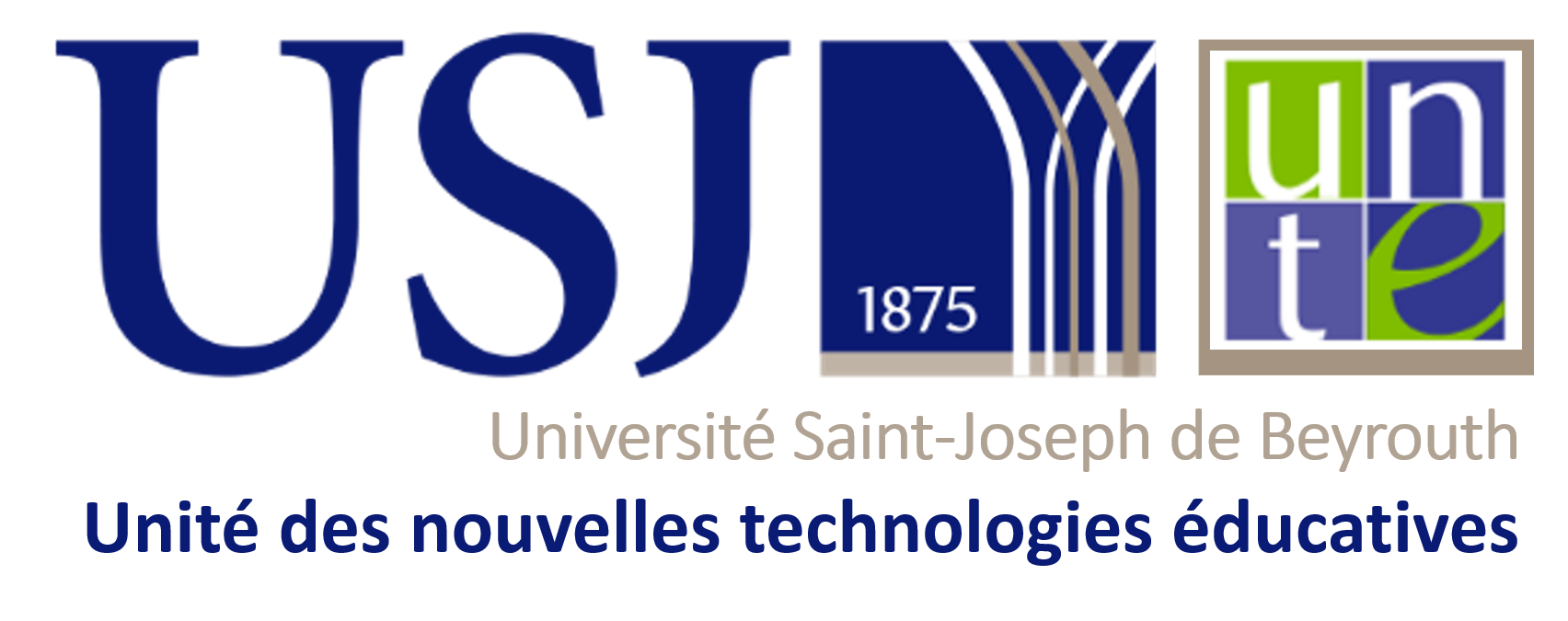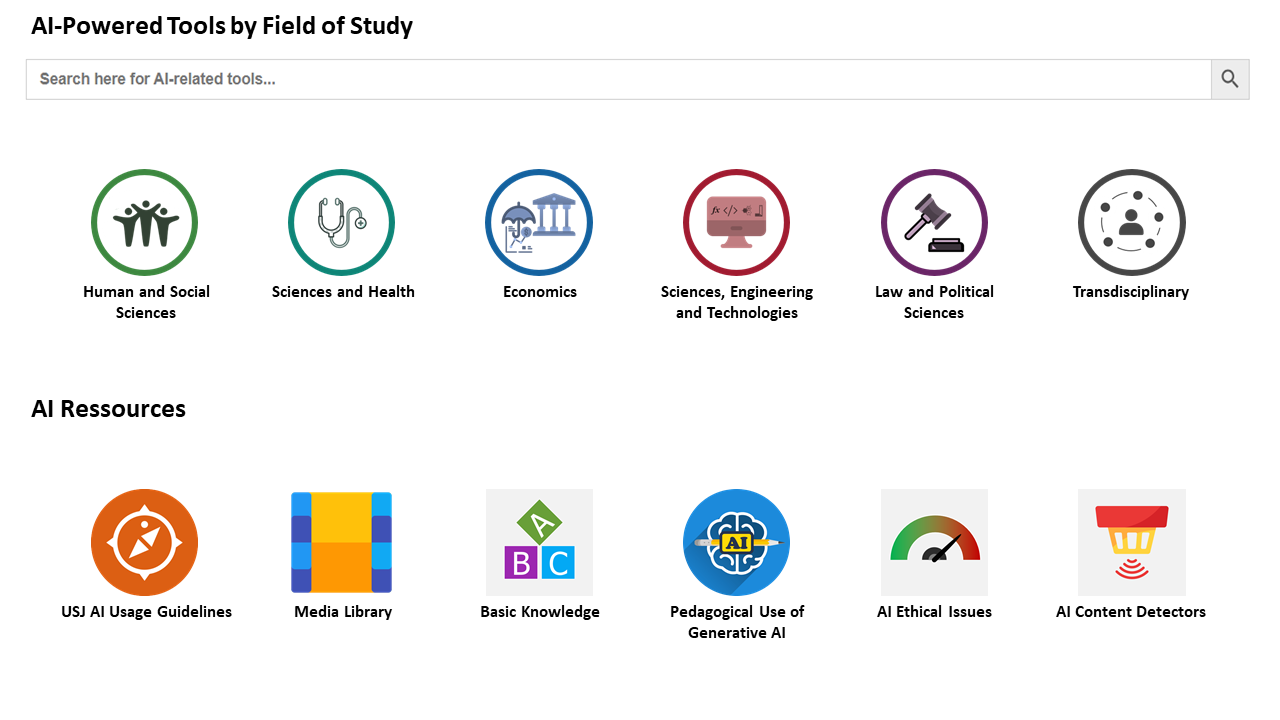© 2025 Center for Digital Innovation and AI
The following guiding principles are designed to ensure the effective, responsible, and ethical use of artificial intelligence (AI) in higher education teaching and learning. These principles are subject to evolution and will be adapted based on the institution's maturity threshold and the advancement of the relevant AI tools.
Pour que ces principes soient optimisés afin de mieux tirer parti de l’apport de l’intelligence artificielle, il est nécessaire d’adopter des orientations stratégiques pour l’intégration de l’intelligence artificielle (IA) dans l’enseignement et l’apprentissage au supérieur.
Recognize the Limitations of Generative AI: Understand that generative AI produces answers based on statistical probabilities and lacks a deep understanding of meaning, veracity, or relevance, making its responses potentially inaccurate or invalid.
Acknowledge AI Benefits and Risks: Be aware of the efficiency and speed that AI brings to ![]() idea search and content writing, while also recognizing the risks of
idea search and content writing, while also recognizing the risks of ![]() algorithmic biases or
algorithmic biases or ![]() hallucinations, which may present plausible yet inaccurate or fabricated information.
hallucinations, which may present plausible yet inaccurate or fabricated information.
Vérifier systématiquement les données et sources d’information données par l’IA générative.
Refine Instructions for Quality Responses: Optimize the quality of AI responses by refining the instructions or prompts used for generating content, utilizing techniques like ![]() the CREATE grid.
the CREATE grid.
![]() Emphasize Active Teaching Methods: Prioritize active teaching methods such as feedback techniques, group work, problem-solving, and flipped classroom approaches to foster students' metacognitive and cognitive skills like critical thinking, argumentation, and creativity, while considering AI's impact on prior learning assessment.
Emphasize Active Teaching Methods: Prioritize active teaching methods such as feedback techniques, group work, problem-solving, and flipped classroom approaches to foster students' metacognitive and cognitive skills like critical thinking, argumentation, and creativity, while considering AI's impact on prior learning assessment.
Maintain ![]() Academic Integrity: Demonstrate academic integrity by appropriately incorporating AI-altered or manipulated digital content into one's work and
Academic Integrity: Demonstrate academic integrity by appropriately incorporating AI-altered or manipulated digital content into one's work and ![]() citing it accordingly.
citing it accordingly.
Suivre les évolutions de son champ disciplinaire à la lumière du développement exponentiel de l’IA et partager ses propres expériences dans un répertoire de ressources et d’outils IA (voir ![]() le répertoire du CINIA) en vue de constituer une communauté de pratique.
le répertoire du CINIA) en vue de constituer une communauté de pratique.
Develop a Critical Perspective: Cultivate a critical stance towards AI usage to prevent disempowerment and loss of autonomy that may arise from over-reliance on seemingly highly effective tools.
Repository of AI Resources and Tools
In this repository, you will find:
- AI-based tools organized by discipline or transdisciplinary categories.
- A collection of resources related to AI, including infographics, examples of educational use, and articles addressing ethical concerns, among others.
Awareness month for the proper use of artificial intelligence at USJ – June 2023 – Recordings
Recordings of AI Awareness Month events are available exclusively to the USJ community.
Note: The Committee for Digital and Artificial Intelligence Strategic Orientation at USJ has approved and validated these guiding principles.
The following guiding principles are designed to ensure the effective, responsible, and ethical use of artificial intelligence (AI) in higher education teaching and learning. These principles are subject to evolution and will be adapted based on the institution’s maturity threshold and the advancement of the relevant AI tools.
To fully leverage the benefits of artificial intelligence, strategic directions for integrating AI into higher education teaching and learning must be adopted. This approach will optimize the application of these principles and harness the potential of AI to enhance the overall educational experience.
Recognize the Limitations of Generative AI: Understand that generative AI produces answers based on statistical probabilities and lacks a deep understanding of meaning, veracity, or relevance, making its responses potentially inaccurate or invalid.
Acknowledge AI Benefits and Risks: Be aware of the efficiency and speed that AI brings to ![]() idea search and content writing, while also recognizing the risks of
idea search and content writing, while also recognizing the risks of ![]() algorithmic biases or
algorithmic biases or ![]() hallucinations, which may present plausible yet inaccurate or fabricated information.
hallucinations, which may present plausible yet inaccurate or fabricated information.
Verify Information Sources: Systematically check the data and sources of information provided by generative AI to ensure accuracy and reliability.
Refine Instructions for Quality Responses: Optimize the quality of AI responses by refining the instructions or prompts used for generating content, utilizing techniques like ![]() the CREATE grid).
the CREATE grid).
![]() Emphasize Active Teaching Methods: Prioritize active teaching methods such as feedback techniques, group work, problem-solving, and flipped classroom approaches to foster students’ metacognitive and cognitive skills like critical thinking, argumentation, and creativity, while considering AI’s impact on prior learning assessment.
Emphasize Active Teaching Methods: Prioritize active teaching methods such as feedback techniques, group work, problem-solving, and flipped classroom approaches to foster students’ metacognitive and cognitive skills like critical thinking, argumentation, and creativity, while considering AI’s impact on prior learning assessment.
Maintain ![]() Academic Integrity: Demonstrate academic integrity by appropriately incorporating AI-altered or manipulated digital content into one’s work and
Academic Integrity: Demonstrate academic integrity by appropriately incorporating AI-altered or manipulated digital content into one’s work and ![]() citing it accordingly.
citing it accordingly.
Stay Informed and Share Experiences: Stay updated on AI developments in your discipline, given the rapid growth of AI, and contribute to building a community of practice by sharing experiences and resources in directories like the ![]() CINIA directory).
CINIA directory).
Develop a Critical Perspective: Cultivate a critical stance towards AI usage to prevent disempowerment and loss of autonomy that may arise from over-reliance on seemingly highly effective tools.
Repository of AI Resources and Tools
In this repository, you will find:
- AI-based tools organized by discipline or transdisciplinary categories.
- A collection of resources related to AI, including infographics, examples of educational use, and articles addressing ethical concerns, among others.
Awareness month for the proper use of artificial intelligence at USJ – June 2023 – Recordings
Recordings of AI Awareness Month events are available exclusively to the USJ community.
Note: The Committee for Digital and Artificial Intelligence Strategic Orientation at USJ has approved and validated these guiding principles.
CINIA is located on the 7th floor of the USJ Human Sciences Campus on Damascus Street in Beirut.
Do not hesitate to contact us at cinia@usj.edu.lb
or call us at +961 1 421 000 extension 5923/5924.
© 2025 Center for Digital Innovation and AI. Created for free using WordPress and Kubio





